
If you've seen the classic 1960 movie "Spartacus," you may be surprised to learn that the rebellious second-century gladiator, portrayed by Kirk Douglas in the film, wasn't actually captured and put to death by the Romans. In real life, he was never found, dead or alive, even though the slave army was defeated on the battlefield [source: Appian]. Spartacus seems to have slipped off into the shadowy netherworld occupied by the likes of 17th-century British pirate "Long Ben" Avery or 1970s airline hijacker D.B. Cooper, who eluded pursuers and never resurfaced again [source: Encyclopaedia Britannica].
Judge Joseph Force Crater relaxed with his wife at their summer cabin three days before his mysterious
disappearance in 1930.
As you can see, people have disappeared without a trace for centuries. There's New York Supreme Court judge Joseph Force Crater, who left his dinner companions and walked down a Manhattan street one evening in 1930, to attend a play, and was never seen again [source: History.com]. Then you have Jane, Arnna and Grant Beaumont, three Australian children who disappeared from a beach in 1966, and were never located, despite an exhaustive search [source: Spencer].
We often become fixated on these cases. That's because, one of the human mind's integral characteristics is what psychologists call closure - our desire to find definite, clear answers to questions, and our corresponding discomfort with the unknown and the ambiguous [source: Konnikova].
Not to mention, the circumstances surrounding these disappearances fuel our love of a good mystery. Here's a look at 10 of the most puzzling disappearances ever.
10. Solomon Northup, Author of "12 Years a Slave"
This illustration, taken from the book "Twelve Years a Slave," shows Solomon Northup refusing to flog
his fellow slave Patsey.
The tragic story of Solomon Northup, a free-born African-American who in 1841 was lured from his New York state home to Washington, D.C., and then kidnapped and forced into slavery in Louisiana, became famous due to the Oscar-winning 2013 film based upon his memoirs. But most of those who were moved by Northup's successful struggle to regain his freedom probably are unaware that his life took a second troubling turn.
After returning home to New York in 1853 and publishing a book about his experiences, Northup went on a speaking tour as an anti-slavery activist and became involved in the Underground Railroad that helped escaped slaves find refuge in Canada. But around 1863, he mysteriously dropped out of sight, and no records of his fate exist. Some believe he may have been captured and killed while serving as a Union spy, while others fear that he was kidnapped and again sold into slavery, though that seems unlikely [source: Carola]. It is known that he experienced financial difficulties and lost his property, and some speculate he might have disappeared to start life over away from his creditors [source: Robichaux]. Although his final whereabouts are unknown, in 2014 five generations of descendants posed for photographs in The Hollywood Reporter.
9. Jimmy Hoffa
A few weeks before his disappearance, Jimmy Hoffa attended the American Booksellers Association
Convention in Washington, D.C. on June 5, 1974.
The brash, hard-nosed and corrupt leader of the Teamsters union spent four years in prison for charges that included jury-tampering, mail fraud and bribery, before being pardoned by President Richard Nixon in 1971 [source: Time]. Four years later, on July 30, 1975, Hoffa disappeared outside a Detroit-area restaurant where he had gone for a meeting. He was attempting to regain power in the Teamsters, and the most popular theory is that he was killed by mobsters who coveted the union's flush pension fund. Two weeks before his disappearance, federal investigators found out that millions had been stolen from the pension fund [source: Candiotti].
Despite decades of FBI probing, Hoffa's remains have never turned up. Some rumours say that he was buried under the old Giants Stadium in New Jersey, while other stories have his body being fed to alligators in the Everglades or else shipped to Japan inside a compacted junked car. In 2013, FBI agents - following a tip from the alleged former underboss of a Detroit crime family - spent several days excavating a suburban Detroit field, but turned up nothing [source: Tur and Connor].
8. The Lost Colony of Roanoke
Reconstructed earthworks were done at the site of Fort Raleigh, built by English settlers of the 'Lost
Colony' at Roanoke, North Carolina.
This one is a conundrum that's puzzled historians for centuries. In July 1587, a group of 117 English settlers landed on Roanoke Island, off the coast of what is now North Carolina [source: Miller]. The following month, John White, the colony's governor, sailed back across the Atlantic to pick up a load of supplies, pledging to return in three months. When he arrived in England, however, war broke out with Spain, and with all the available ships pressed into service against the Spanish Armada, Smith was stranded. He wasn't able to sail back to Roanoke Island until August 1590 [sources: Miller, History.com].
When White arrived, he was shocked to discover that the fort he'd erected had been partially dismantled, and the colonists he'd left behind had vanished - as had their houses, weapons and other belongings [source: Miller]. There was also no Maltese cross carved anywhere, the agreed-upon sign that the colony had left under duress.
The only apparent clue, carved into a wooden post, was "CROATOAN," the name of both a nearby island and a Native American tribe. It could be that they were killed or abducted by Native Americans, with whom the English had tense relations, or fallen victim to Spaniards who came up from Florida. They might have suffered a devastating epidemic. Or perhaps they split up and intermarried with some of the Native American tribes. It's also been hypothesized that they may have tried to sail back to England themselves, only to be lost at sea [sources: Basu, History.com].
7. Three Alcatraz Escapees
A prison guard kneels by the hole in Frank Morris' cell through which he and John and Clarence Anglin
escaped. Prison officials report the hole was dug with broken spoons.
The federal prison on Alcatraz Island was once home to the most incorrigible criminals, because even if they managed to get past the walls, the cold, swift currents of the San Francisco Bay seemingly made the place escape-proof [source: Federal Bureau of Prisons]. But that didn't stop convicts from trying.
In 1962, Frank Morris and the Anglin brothers - John and Clarence - used spoons to dig holes in the walls of their prison cells, leaving behind papier-mache heads propped on their pillows to fool the guards into thinking they were still asleep [source: Sullivan]. Then they climbed up a utility vent and down a drainpipe and headed for the water, where they paddled away, using a boat and life vests that they had improvised from raincoats they glued together [sources: Sullivan, BOP].
The prisoners were never caught, though a few pieces of their gear and possessions were found floating in the bay, and a body - too deteriorated to be identifiable - was found a short distance up the coast several weeks later [source: BOP].These findings led prison authorities to classify the escapees as presumed drowned. However, it's worth noting that 50 years later, the U.S. Marshals Service still had the three men on their list of wanted fugitives [source: Sullivan]. And, the Anglins' family thinks the brothers are still alive [source: Nolte].
6. Richard Serra's "Equal-Parallel: Guernica-Bengasi"
Richard Serra is known for his massive sculptures. Here, he poses in front of one in the pavilion of the
49th International Art Exhibition in Venice in 2001.
You'd think that a 42-ton (38-metric-ton) sculpture would be pretty difficult to lose. After all, it consisted of four 5-foot-wide (1.5-meters-wide) blocks of steel with an empty space between each block [source: Art Newspaper]. But that's exactly what happened to "Equal-Parallel: Guernica-Bengasi," a 1986 work by sculptor Richard Serra. The sculpture, commissioned by Madrid's Reina Sofia Contemporary Art Museum, was put on display there for four years after its creation. But in 1990, when the museum's management embarked upon a renovation, it decided the piece was too big, and it was shipped off to a private storage facility.
Fifteen years later, in 2005, the museum's recently installed director, Ana Martinez de Aguilar, decided to retrieve "Equal-Parallel: Guernica-Bengasi" and once again exhibit it. She discovered that the storage company had gone into receivership and that the sculpture - whose paper trail ended in 1992 - was embarrassingly nowhere to be found. Serra, to his credit, agreed to create a new, identical copy of his sculpture for the museum, with the institution picking up only the cost of the fabrication at a German foundry [source: Art Newspaper].
5. Helen Brach
Two photographs of candy heiress Helen Brach who disappeared in 1977 and was declared dead in 1984.
Helen Vorhees Brach, the widow of candy company executive Frank Brach, disappeared after supposedly being dropped off at Chicago's O'Hare International Airport in February 1977. For years, rumours swirled around the fate of the eccentric heiress, who had already built a US$500,000 marble monument in an Ohio cemetery, where she had planned to be buried alongside her husband, parents and two dogs.
It didn't help that the servant who'd dropped her off at the airport, Jack Matlick, took two weeks to report the disappearance and later was found to have cashed US$13,000 in checks with Brach's signature forged on them. Or that Matlick and her brother Charles Vorhees burned Brach's diaries and writings after her death [sources: Enstad, Mills].
But in 1994, federal authorities instead arrested Richard Bailey, a former vacuum-sweeper salesman turned swindler whose game was to court older women (such as Brach) and convince them to invest in racehorses of dubious value. Bailey pled guilty to charges that included fraud and racketeering, and the judge who sentenced him to 30 years in prison decided that Bailey had probably played a role in Brach's disappearance, though Bailey denied that. Matlick died in 2011 [sources: The New York Times, Goudie].
4. George Washington's False Teeth
A replica of one of George Washington's dentures is shown along with a copy of his letter written to his
dentist Mr. Greenwood thanking him for his attentiveness. Greenwood made this denture from a gold
plate with ivory teeth riveted to it.
It'd be embarrassing enough to misplace your own dentures, so imagine how red-faced you'd be if you couldn't find a historic pair that belonged to the first U.S. president. But that's exactly what happened in 1981, when the Smithsonian Institution's National Museum of American History discovered that one pair of Washington's chompers, which had been loaned to the Smithsonian in 1965 by the University of Maryland Dental School, had vanished from a locked storage room where they'd been kept. A search of the facility failed to produce any sign of the teeth [source: UPI].
The following year a museum employee revealed that Washington's lower plate had turned up, in an area of the museum accessible only to Smithsonian employees, but the top half was still missing. Though popular myth portrays Washington as wearing wooden teeth, his dentures actually contained ivory and gold, and there's a possibility that the thief destroyed the relic in order to melt down the gold and sell it [source: Molotsky].
3. Flight 19
This TBM Avenger was flown by Pres. George H.W. Bush during World War II.
One afternoon in December 1945, a team of five TBM Avengers - prop-driven torpedo bombers - took off from a naval base in Fort Lauderdale, Florida, on the first leg of a routine two-hour training exercise that was supposed to take the planes no more than 150 miles (241 kilometres) away from the airstrip.
About an hour-and-a-half after take-off, the control tower in Fort Lauderdale received a strange message from the team's flight leader, who sounded confused and worried: "Both my compasses are out and I am trying to find Fort Lauderdale, Florida." More discussion followed between the tower, the lead pilot and the student pilots of the other planes as he tried to determine where they were.
When the planes didn't return, a PBM Mariner aircraft with a 13-man crew was dispatched to search for them. That plane never came back, either. The U.S. military then launched one of the largest searches in history, with hundreds of ships and aircraft scrutinizing more than 200,000 square miles (517,998 square kilometres) of the Atlantic Ocean and Gulf of Mexico, but no trace of the planes was ever found.
Since then, the mystery of Flight 19 remains one of the most puzzling mysteries in the history of aviation, providing more fodder for paranormal enthusiasts who believe in the Bermuda Triangle. The reality is simpler, if more tragic. The instructor-pilot thought he was over the Florida Keys, when he was in fact over the Bahamas. He changed course several times, and the planes ran out of fuel and crashed [source: McDonell].
2. The Crew of the Mary Celeste
The Mary Celeste was found unmanned drifting towards the Strait of Gibraltar in 1872.
The Mary Celeste is sort of the 19th-century maritime version of Flight 19, except that the ship itself actually was recovered. In December 1872, the British vessel Dei Gratia was about 400 miles (644 kilometres) east of the Azores islands, which are a thousand miles (1,609 kilometres) west of Portugal, when its crew spotted another ship drifting in the distance. It turned out to be the Mary Celeste, which had departed from New York City eight days earlier on a trip to Genoa, Italy.
When the British sailors boarded the Mary Celeste, they were puzzled. The crewmen's belongings were still in their quarters, and the cargo of 1,701 barrels of industrial alcohol was intact. The ship had enough food and water to last six months at sea. So where were the people? The Mary Celeste crew, consisting of Capt. Benjamin Spooner Briggs, his wife and 2-year-old daughter, plus seven crewmen, was gone, as was the ship's lone lifeboat. The last log entry was from 11 days before the ship was found empty.
There was only one clue to what might have happened: One of the ship's two pumps had been partially disassembled, and there was water sloshing inside the ship's bottom, suggesting that the Mary Celeste had suffered a mechanical malfunction. Even so, the Mary Celeste was still sailable. One theory is that the captain mistakenly thought it was about to sink, so they abandoned ship for a lifeboat and drowned at sea. There are also wilder explanations, ranging from a mutiny to an attack by a sea monster, but more than 140 years later, nobody really knows [source: Blumberg].
1. Pro Basketball Star John Brisker
The Seattle SuperSonics are depicted in action around the time John Brisker played for them.
In the early 1970s, Brisker was an all-star forward for the Pittsburgh Condors of the now-defunct American Basketball Association averaging 26 points a game. But his soft shooting touch and quickness were overshadowed by his reputation as a menacing and hot-tempered brawler. It once took four policemen to subdue him in an off-court tussle. After finishing his career in 1975 with the NBA's Seattle SuperSonics, Brisker tried his hand at operating a restaurant, but it eventually failed. In February 1978, Brisker travelled to Africa with a friend, supposedly to lay the groundwork for an import-export business that he hoped would resurrect his fortunes and help to pay off his creditors.
About six weeks later, Brisker made a call from Kampala, Uganda, to his companion, Melvis Diane Williamson, telling her that he would soon send for her and their young daughter. That was the last anyone heard from him. Over the years, rumours have persisted that Brisker was killed while fighting as a mercenary for Idi Amin, or that he was murdered after running afoul of the Ugandan dictator, who had an even worse mean streak than Brisker did.
Other stories have him drifting to Guyana and dying in the Jonestown massacre in November 1978. Or maybe he took on a new identity and is alive somewhere today. As a Seattle sportswriter put it, "All anyone knows is the ungentle giant shone briefly for the SuperSonics and veered out of sight" [sources: Jamieson, Halvonik].
Author's Note: This assignment was an interesting one for me, because I have a personal connection to two of the missing people on this list. When I was 13, I went to pro basketball game and afterward got up my nerve to approach John Brisker and ask him for his autograph. I remember him as a towering, muscular giant, clad in a flamboyant midnight-blue shirt with white polka dots and bellbottom jeans, who despite his fearsome reputation turned out to be surprisingly friendly. Years later, as a magazine journalist, I did a piece on missing heiress Helen Brach and interviewed numerous people who'd known her - including Richard Bailey, the imprisoned con artist who was accused of involvement in her disappearance. I spent a lot of time talking to Bailey, who struck me as more of a grifter than a killer. It's hard for me to imagine that Matlick didn't have something to do with her demise.
Related Articles:
Article Sources:
1. Appian. "The Civil Wars." Loeb Classical Library. 1913. (March 30, 2014)
2. Art Newspaper. "Return of the Lost Serra." Theartnewspaper.com. Dec. 10, 2008. (March 30, 2014)
3. Associated Press. "A look at some passengers on Flight 370." USA Today. March 29, 2014. (March 30, 2014)
4. Basu, Tanya. "Have We Found the Lost Colony of Roanoke Island?" National Geographic. Dec. 6, 2013. (March 31, 2013)
5. Biography.com. "John Cabot." Biography.com. 2013. (March 30, 2014)
6. Blumberg, Jess. "Abandoned Ship: The Mary Celeste." Smithsonian. November 2007. (March 31, 2014)
7. Candiotti, Susan. "Feds, again, leave empty-handed in Hoffa hunt." CNN. June 19, 2013. (March 30, 2014)
8. Carola, Chris. "'12 Years A Slave' Author, Solomon Northup's, Death Still A Mystery." Associated Press. March 16, 2014. (March 30, 2014)
9. Dizikes, Cynthia. "Ruby ring may hold clue to 1977 disappearance of heiress." Chicago Tribune. Nov. 25, 2011. (March 31, 2014)
10. Encyclopaedia Britannica. "John Avery." Britannica.com. (March 30, 2014)
11. Enstad, Robert. "Decade Later, Brach Mystery - and Fortune - Intact." Chicago Tribune. March 2, 1987. (March 31, 2014)
12. Federal Bureau of Prisons. "The Rock." (March 31, 2014)
13. Heinzmann, David and Coen, Jeff. "Haunted by night Brach died." Chicago Tribune. April 10, 2005. (March 31, 2014)
14. Goudie, Chuck. "I-Team: Prisoner Richard Bailey claims he was in love with missing heiress Helen Brach." WLS-TV. May 14, 2013. (March 31, 2014)
15. Halvonik, Steve. "Brisker ruled dead, but disappearance still a mystery." Pittsburgh Press. July 23, 1985. (March 31, 2014)
16. History.com. "Aug 6, 1930: Joseph Force Crater becomes the missingest man in New York." History.com. 2014. (March 30, 2014)
17. History.com. "What happened to the 'Lost Colony' of Roanoke?" History.com. Oct. 3, 2012. (March 30, 2014)
18. Jamieson, Robert L. , Jr. "Former Sonic Forever Shrouded in Mystery." Seattle Post-Intelligencer. July 1, 2004. (March 31, 2014)
19. Kiger, Patrick J. "The Horse Lady Vanishes." GQ. May 1995. (March 31, 2014)
20. Konnikova, Maria. "Why We Need Answers." The New Yorker. April 30, 2013. (March 30, 2014)
21. McDonell, Michael. "Lost Patrol." Naval Aviation News. June 1973. (March 31, 2014)
22. Miller, Lee. "Roanoke: Solving the Mystery of the Lost Colony." Arcade Publishing. 2001. (March 31, 2014)
23. Mills, Barbara Kleban. "Whoever Knows the Fate of Candy Heiress Helen Brach Is as Quiet as Her Empty Grave." People. May 28, 1984. (March 31, 2014)
24. Molotsky, Irvin. "A Crime Half Solved: Part of Washington's Teeth Reappear." The New York Times. Aug. 30, 1982. (March 31, 2014)
25. The New York Times. "Con Man Tied To Killing Gets 30 Years in Jail." June 16, 1995. (March 31, 2014)
26. Nolte, Carl. "Alcatraz escapees' family convinced brothers alive." SFGate.com. March 18, 2013. (March 31, 2014)
27. Roach, John and Than, Ker. "Where Is Amelia Earhart? Three Theories but No Smoking Gun." Nationalgeographic.com. July 24, 2012. (March 30, 2014)
28. Spencer, Beth. "Who's Watching the Children? The Beaumont Case Revisited." The Age. Jan. 21, 2006. (March 30, 2014)
29. Sullivan, Laura. "Return To Alcatraz: Will A Legend End After 50 Years?" NPR. June 10, 2012. (March 30, 2014)
30. Time.com. "10 Famous Disappearances: Jimmy Hoffa." (March 30, 2014)
31. Tur, Katy and Connor, Tracy. "Latest search for Jimmy Hoffa called off with no remains found." NBC News. June 19, 2013. (March 30, 2014)
32. United Press International. "Washington's False Teeth Taken From Smithsonian." The Bulletin. June 20, 1981. (March 31, 2014)
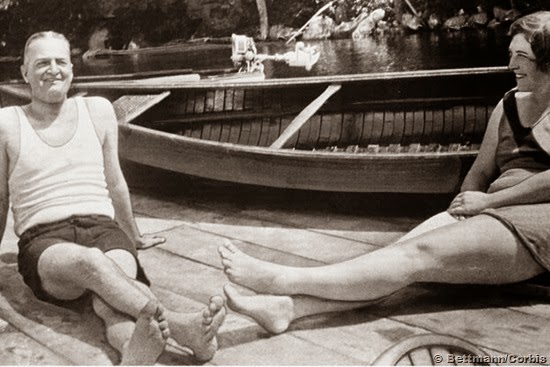
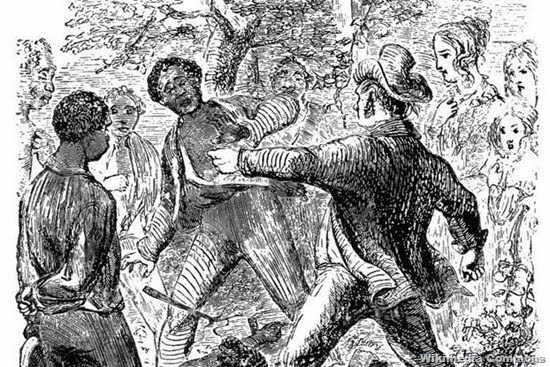


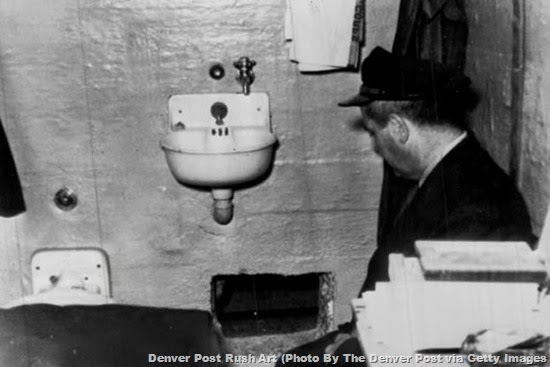
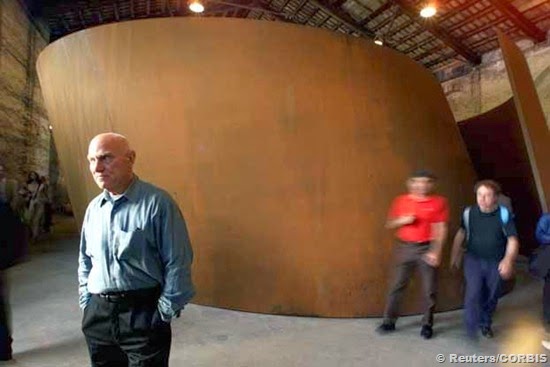
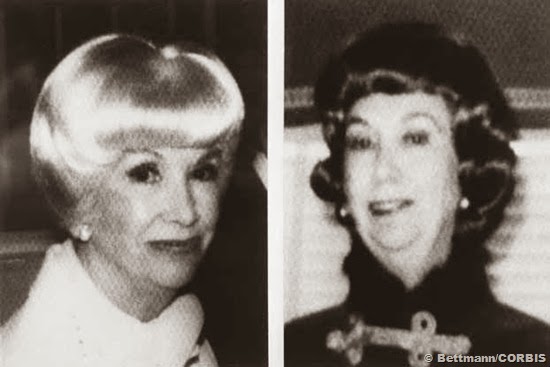
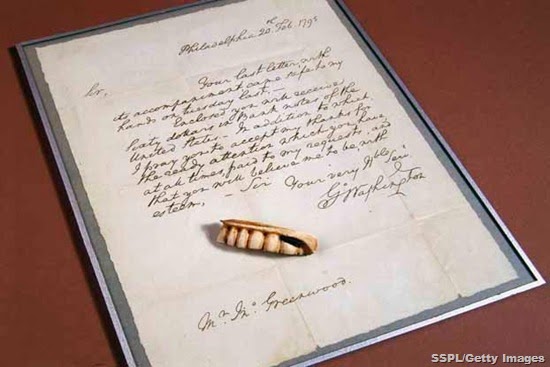



No comments:
Post a Comment
Please adhere to proper blog etiquette when posting your comments. This blog owner will exercise his absolution discretion in allowing or rejecting any comments that are deemed seditious, defamatory, libelous, racist, vulgar, insulting, and other remarks that exhibit similar characteristics. If you insist on using anonymous comments, please write your name or other IDs at the end of your message.